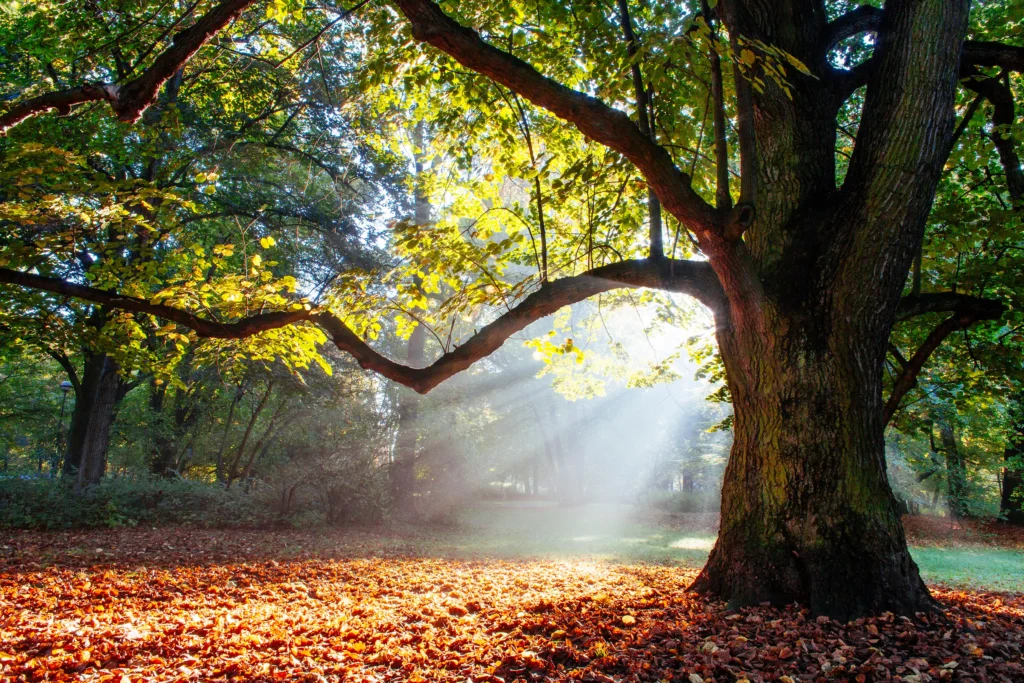
Amidst the chaos of our everyday routines, we often fail to recognize the quiet protectors that encircle us – trees. These magnificent beings not only provide us with oxygen but also play a crucial role in maintaining the ecological balance of our planet. Just like humans, trees too have their ways of communicating their health, and understanding these signs can help us better care for them. So, let’s delve into the subtle indicators that reveal the robustness of a tree’s well-being in Waterloo, IL.
Vibrant Foliage
One of the most apparent signs of a healthy tree is its foliage. Vibrant green leaves (or needles, in the case of conifers) indicate an ample supply of chlorophyll, the pigment responsible for photosynthesis. Look for leaves that are uniformly green and free from discoloration, spots, or holes. Changes in color or premature leaf drops might signify underlying issues such as pests, diseases, or environmental stress.
Strong Branch Structure
A healthy tree boasts a sturdy branch structure. Branches should be firmly joined to the trunk, showing no signs of weakness or decay. Cracks, splits, or dead branches can indicate structural problems that need attention. Additionally, observe the arrangement of branches – a balanced distribution ensures proper weight distribution and reduces the risk of breakage, especially during storms.
Adequate Growth
Growth is a fundamental aspect of a tree’s vitality. Healthy trees exhibit steady growth in both height and girth. Annual growth rings visible on cross-sections of the trunk indicate active growth and good health. However, it’s essential to note that certain species naturally grow slower than others, so understanding the growth patterns specific to the tree species is crucial.
Robust Bark
The bark serves as the protective outer layer of a tree, shielding it from external threats such as pests, diseases, and harsh weather conditions. Healthy bark is smooth, intact, and free from cracks, lesions, or abnormal growths. Different species have distinct bark characteristics, ranging from smooth to deeply furrowed, but regardless of appearance, the bark should feel firm and resilient to the touch.
Abundant Wildlife
A flourishing ecosystem around a tree is a telltale sign of its health. Healthy trees provide food, shelter, and nesting sites for various wildlife, including birds, insects, and mammals. Observing birds nesting or feeding, squirrels foraging, or insects buzzing around it in Waterloo, IL indicates a thriving ecosystem sustained by the tree. Conversely, a lack of wildlife activity might signify ecological imbalance or tree decline.
Efficient Water Management
Adequate water uptake and distribution are essential for a tree’s health. Signs of efficient water management include lush foliage, turgid leaves, and regular growth. However, excessive wilting, drooping, or yellowing of leaves might indicate water stress or poor drainage. Conversely, waterlogged soil can lead to root rot and other moisture-related issues.

Resilience to Environmental Stress
Healthy trees possess a remarkable ability to withstand environmental stressors such as drought, extreme temperatures, and pollution. While no tree is entirely immune to stress, resilient trees exhibit adaptive traits such as deep root systems, thick cuticles, and drought-tolerant foliage. Additionally, trees with healthy microbial communities in the soil are better equipped to combat stress and nutrient deficiencies.
If you are looking for exceptional tree care services in Waterloo, IL, contact Merritt’s Tree Service today for information.